Celebrity cannabis brands work best when the figures behind them are known consumers of the product and earnest in their vision of bringing something unique to the table.
Woody Harrelson is one of Hollywood’s most well-known partakers. The actor-activist has been a visible cannabis advocate for decades, and his new dispensary The Woods is the latest addition to West Hollywood’s “Emerald Village” scene. The store, a collaboration between the Academy Award-nominated and Emmy-winning actor, comedian Bill Maher (another well-known toker), ERBA Market cofounders Devon “Samba” Wheeler and Jay Handal, and interior designer Thomas Schoos, presents a very different vision of the plant from that presented by its peers.
The guiding concepts at The Woods are legacy sungrown cannabis and environmentalism, kindred and intertwined passions of Harrelson’s that each demand urgent attention from the industry.
“Some of the Northern California cultivators are growing the best flower in the world, but so much of it goes [illicitly] to the East Coast,” said Wheeler, highlighting the major challenges California’s legacy growers have faced transitioning to a legal market dominated by industrial-scale producers and an unsustainable demand for ultra-high-potency indoor flower. “Woody was like, ‘I want to move the needle and do my part to bring quality sungrown cannabis back to Los Angeles.’ The industry we know today is built on the backs of these generational growers, and we want to honor them on our shelves.”
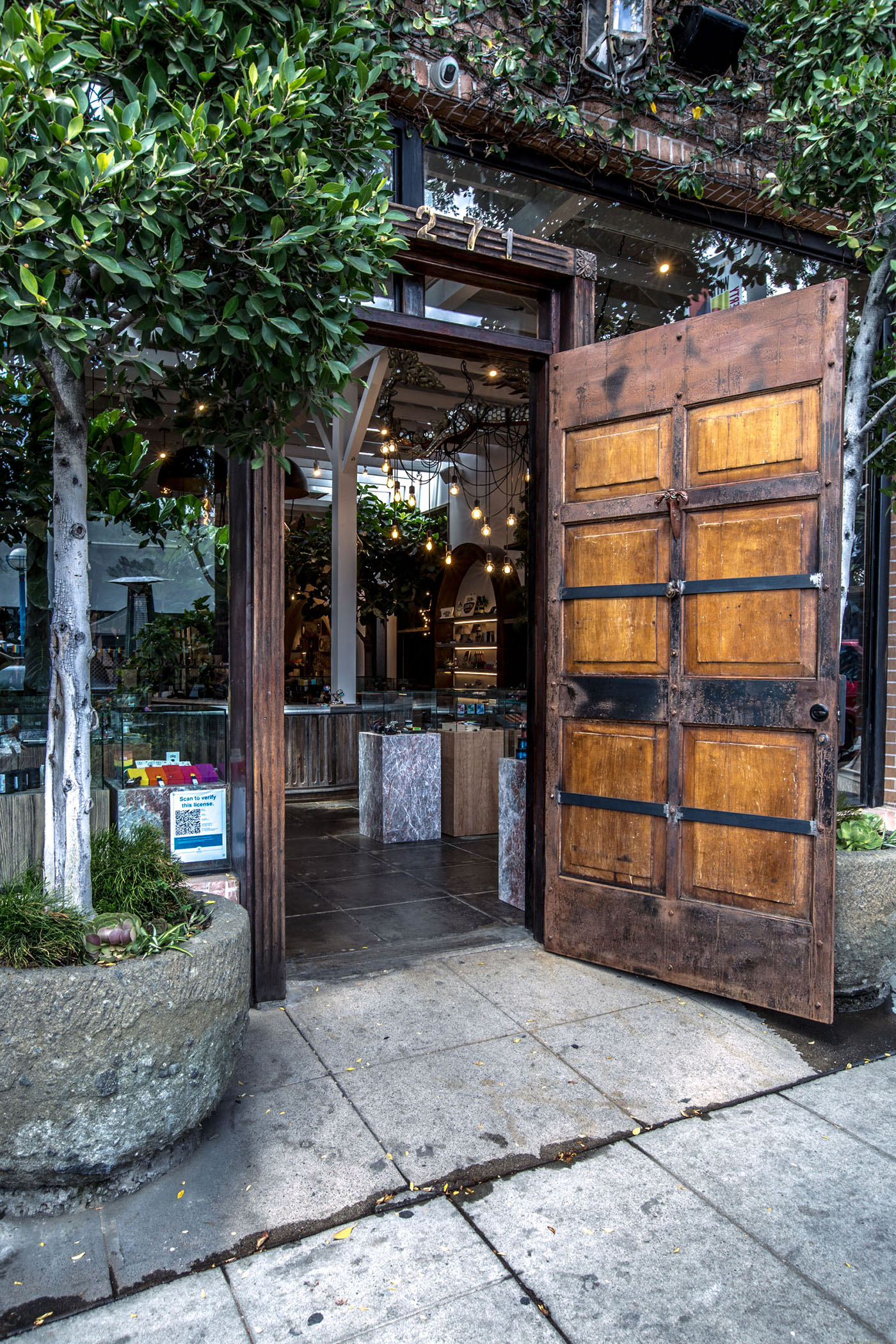
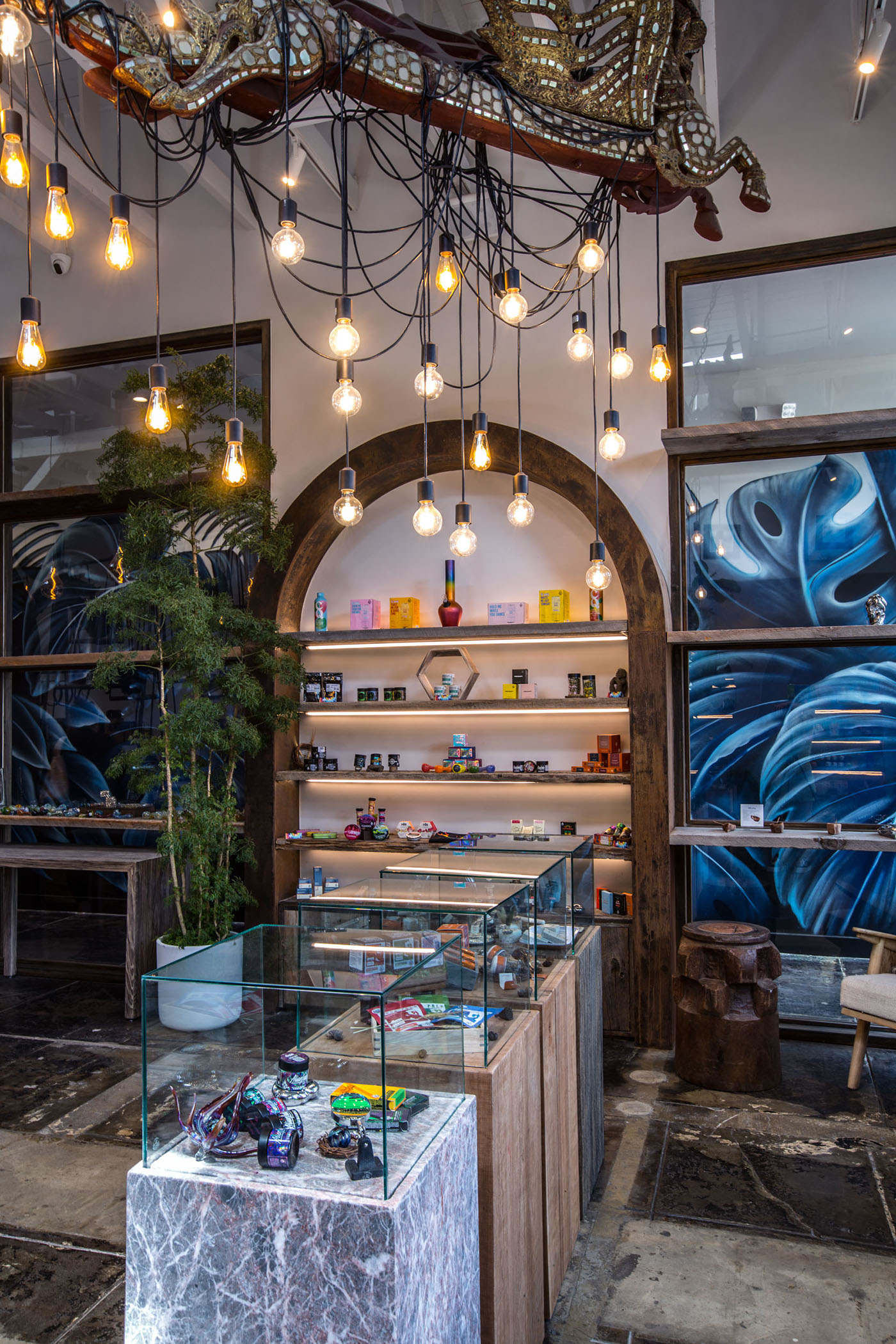
From the rainbow-painted streets of Santa Monica Boulevard, the unassuming façade of The Woods is shrouded in foliage, luring visitors in from the cacophony of West Hollywood as though they’re clambering through a hedge and into a lush paradise far from the city.
“Nature is our philosophy, and nature is our environment,” said Schoos, The Woods’ creative director. “Our goal is to embrace the guest’s five senses when they walk through that door.”
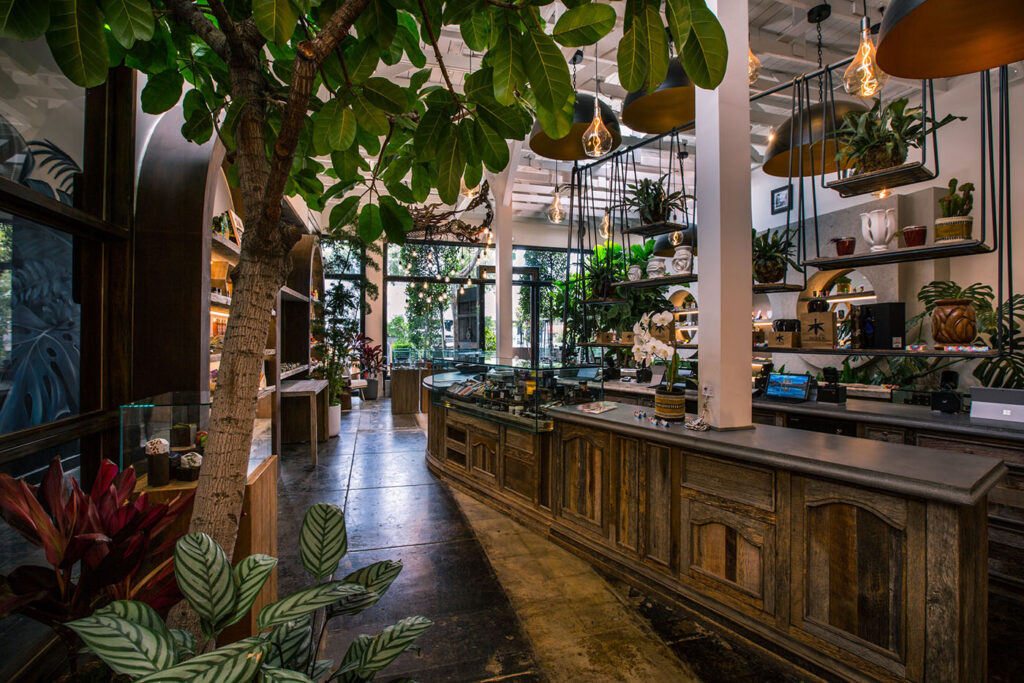
Anchored by a semicircular marble bartop and a trellis-like shelving unit, the open-plan sales floor utilizes standalone stone and glass display boxes and recessed shelving units on the outer walls to showcase brands and products. On the left wall, among the four-packs of Cann’s sparkling beverage and opulent small-batch edibles from Rose Delights, are a pair of circular windows providing a view into the room next door, which will be an adjoining full-service bar when it opens (projected to occur toward the end of this summer). The shelves are made of different types of hand-troweled natural plasters, while the windows are framed with hot-rolled steel, which Schoos’s team left to rust and finished with wax. Through the windows, one gets a glimpse of a hallway-length mural of moody blue monstera leaves by LA-based muralist Muckrock.
Overhead, large half-dome light shades, illuminated by LEDs to reduce energy consumption, hang from the ceiling like upended singing bowls. Throughout the space, Schoos applied a patchwork of distressed wooden panels repurposed from an old barn in Montana, imbuing the environment with a cozy, lived-in feel while adhering to the mandate of sustainable practices.
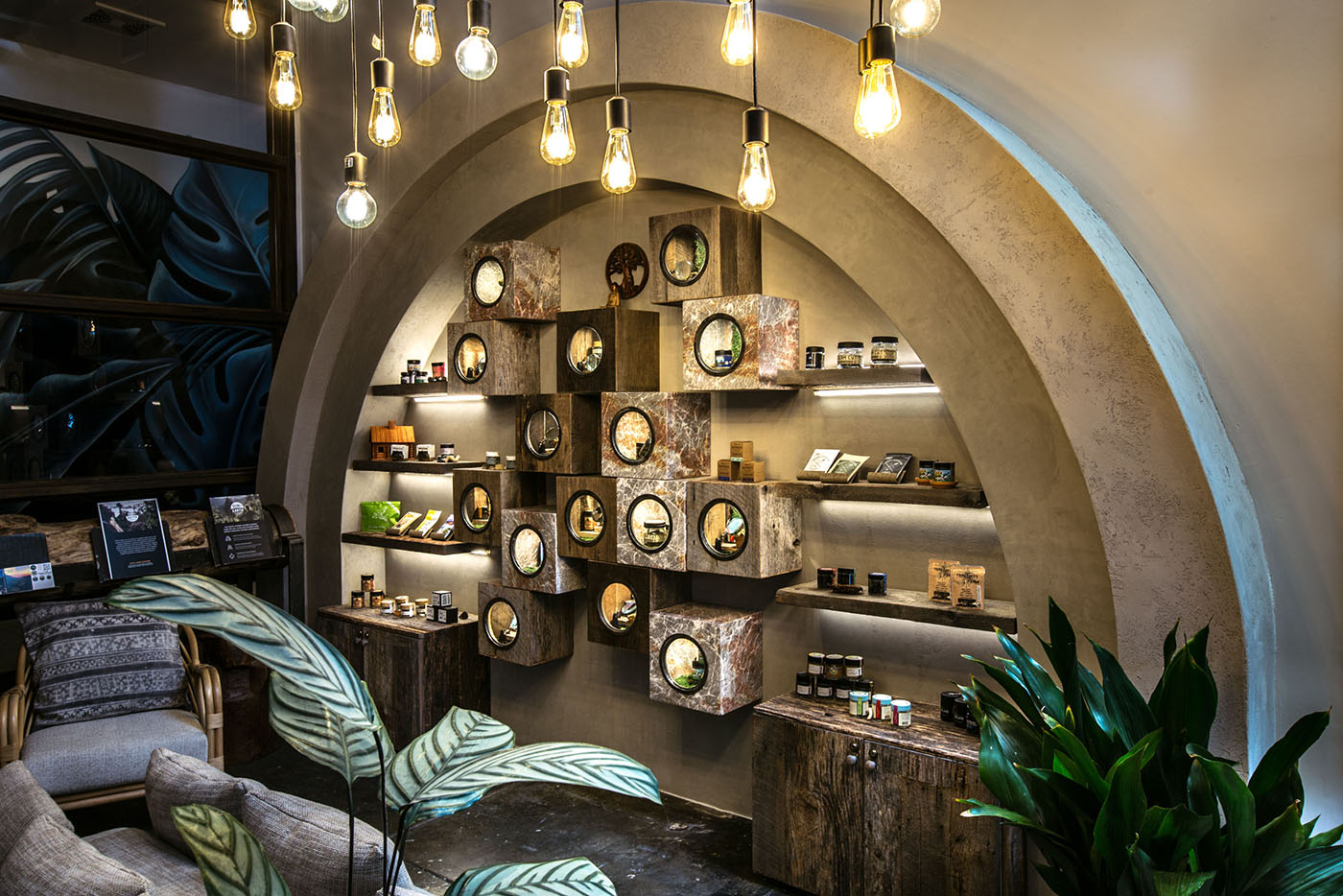
The group modified the building’s structure very little. The edifice was erected in 1929 and previously served as the studio for Schoos’s interior design firm, which has completed hundreds of high-profile hospitality and private-residence projects globally.
While his body of work is diverse, a consistent hallmark of Schoos’s style is the use of plants and influences from his travels, particularly in Asia. The German-born designer has given life to The Woods with voluminous fiddle-leaf figs, large-leaf ficus trees, and a pair of hand-carved, 150-year-old Thai temple dragons entwined in cables with string lights and floating above guests’ heads.
The result is a harmonious marriage of natural and manmade materials, curves, and straight lines, balanced in a way that feels serene and snug yet vibrant and spacious. The Woods is Schoos’s firm’s first dispensary project, and he said creating a space that was comfortable for a variety of consumers was of paramount importance.
“I like smaller spaces that are more intimate,” he said. “I think when people come into dispensaries, they’re either looking for that intimate one-on-one experience, or they already know everything and they want it quick. We aimed to meet both of those needs within the same space.”
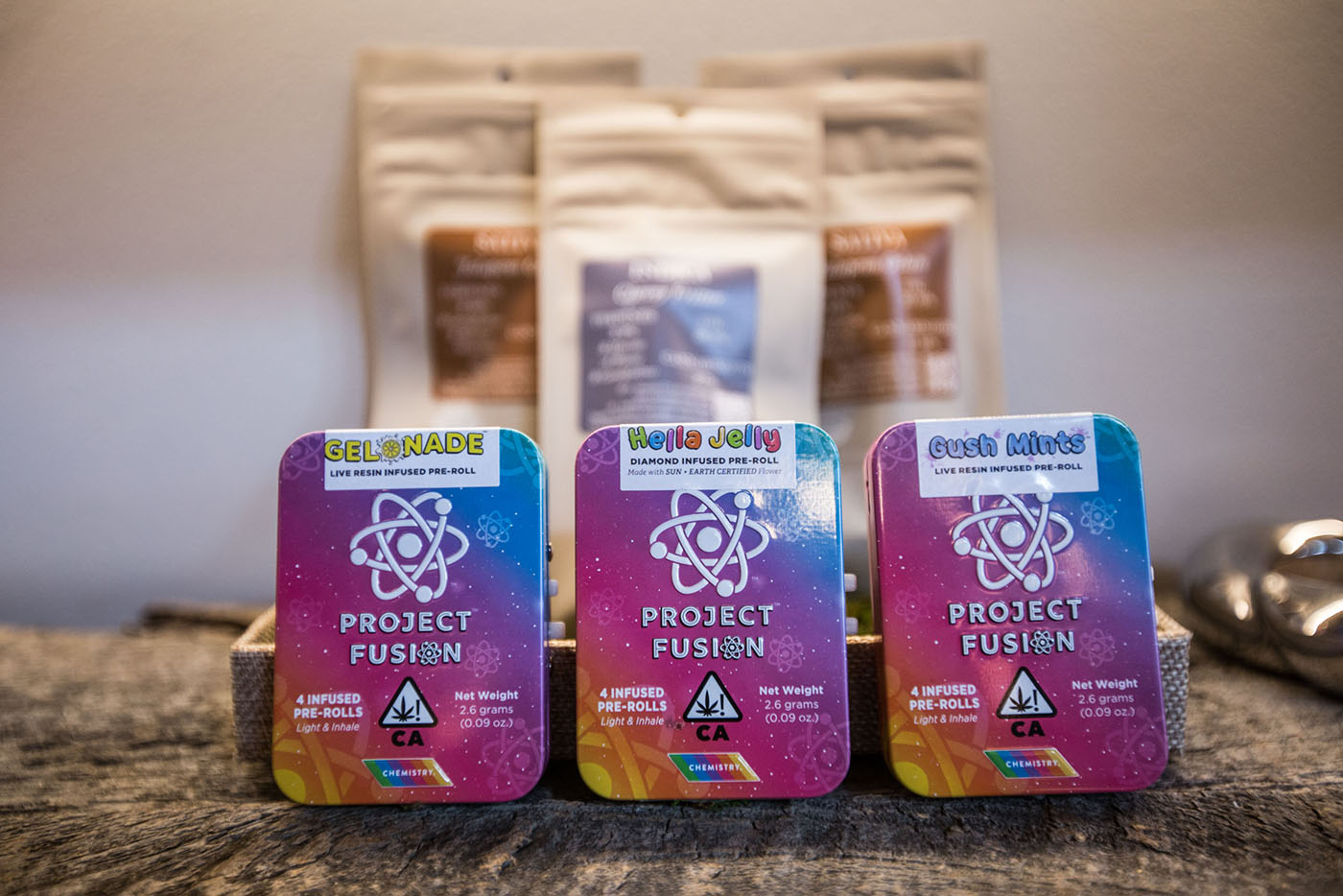
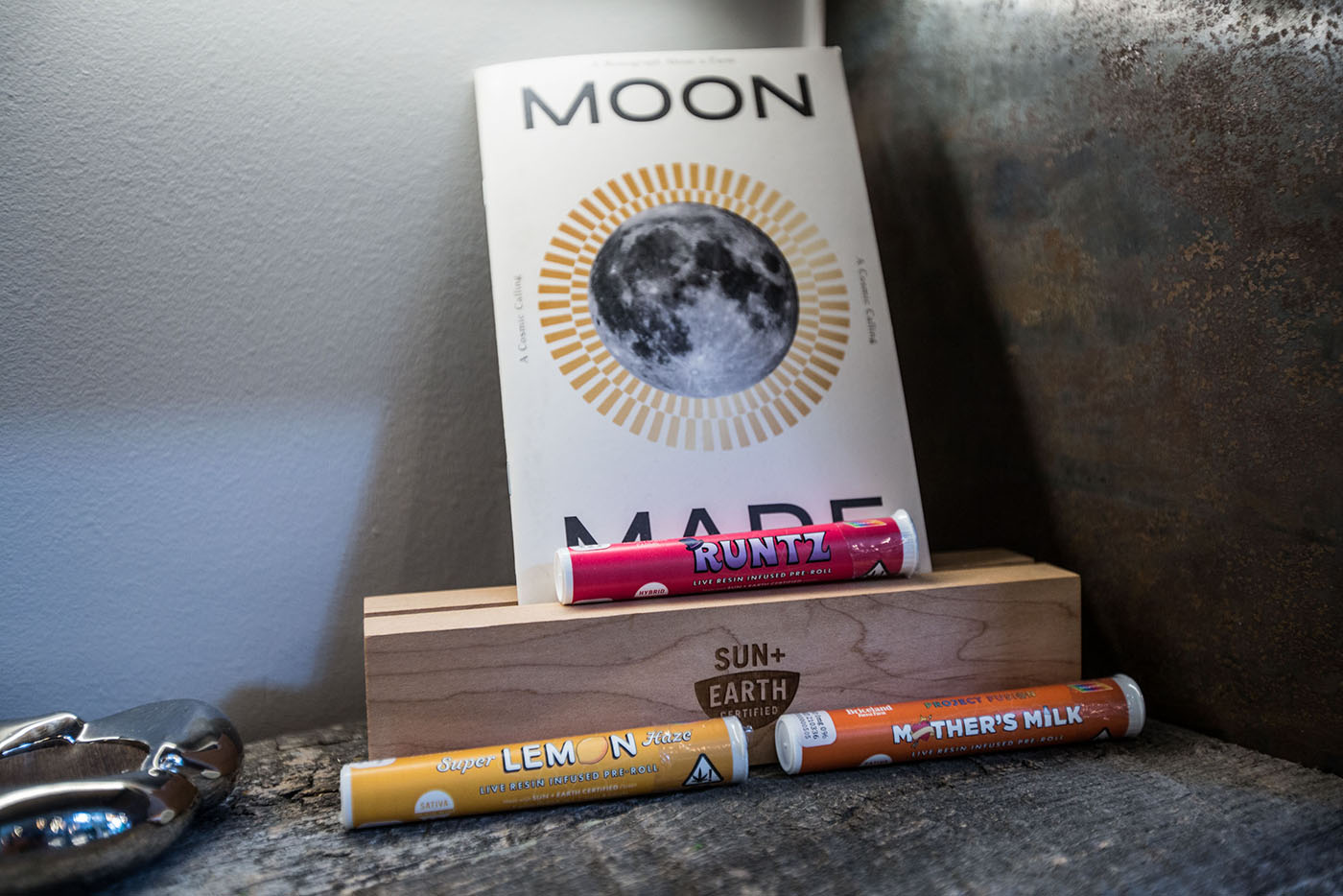
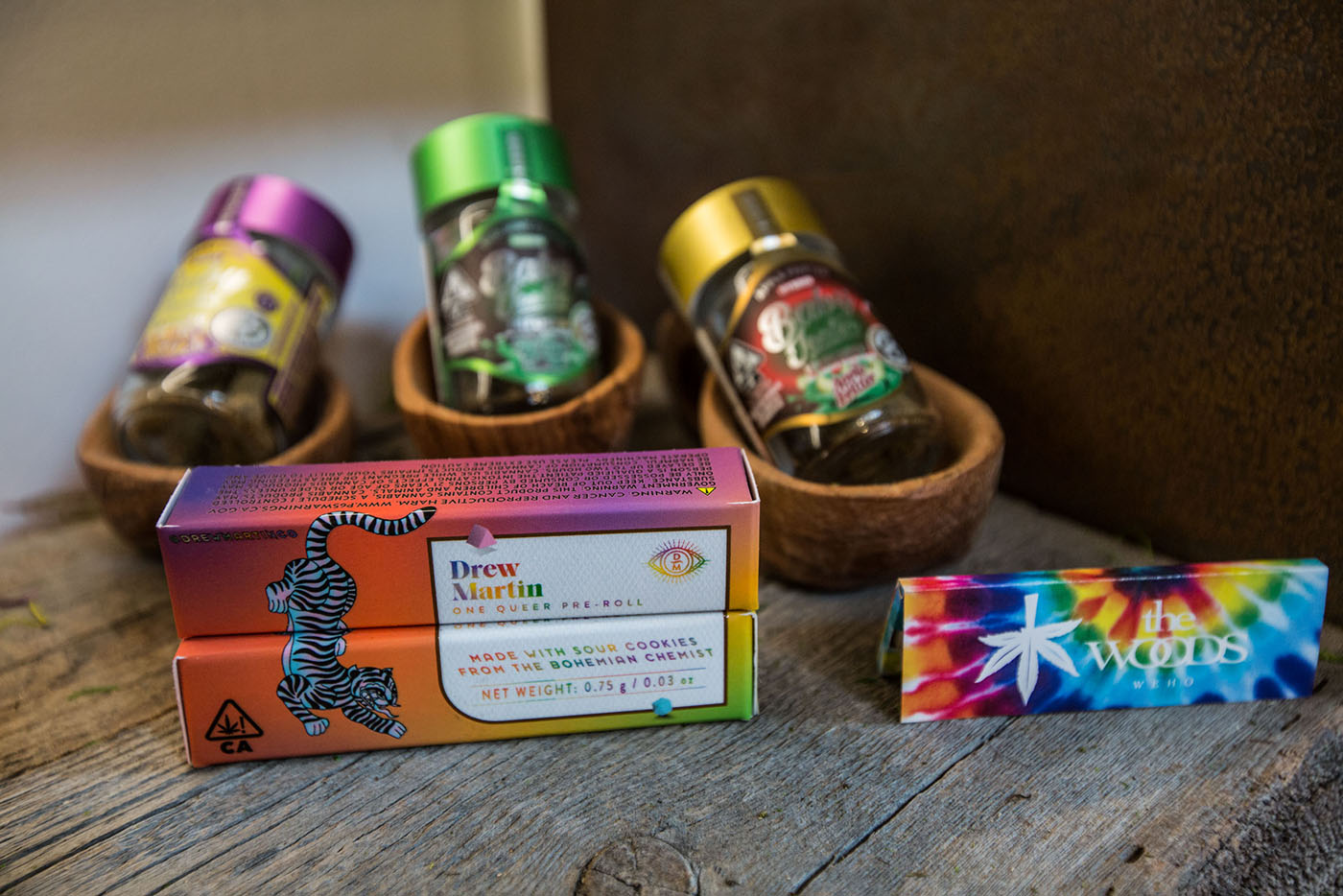
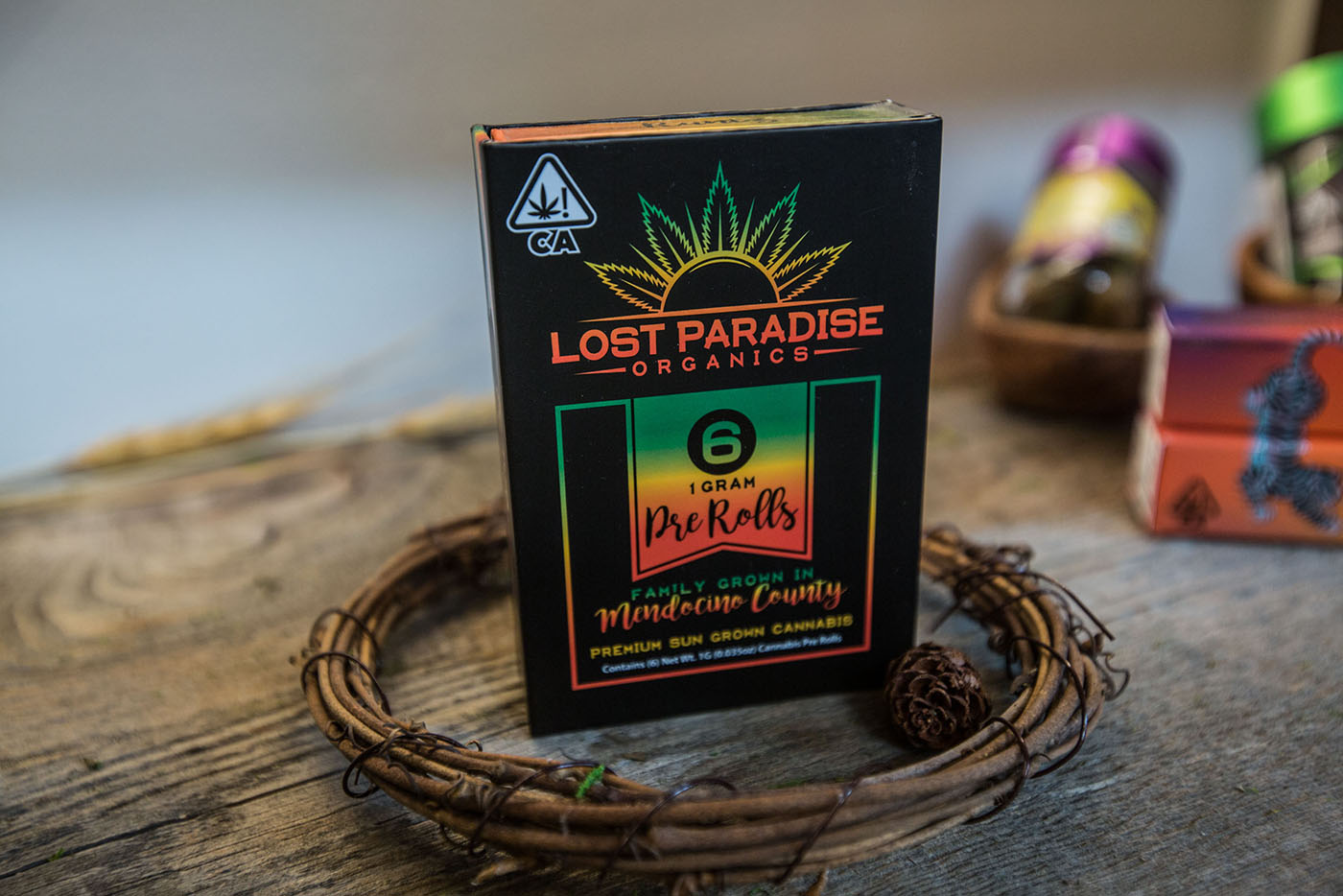
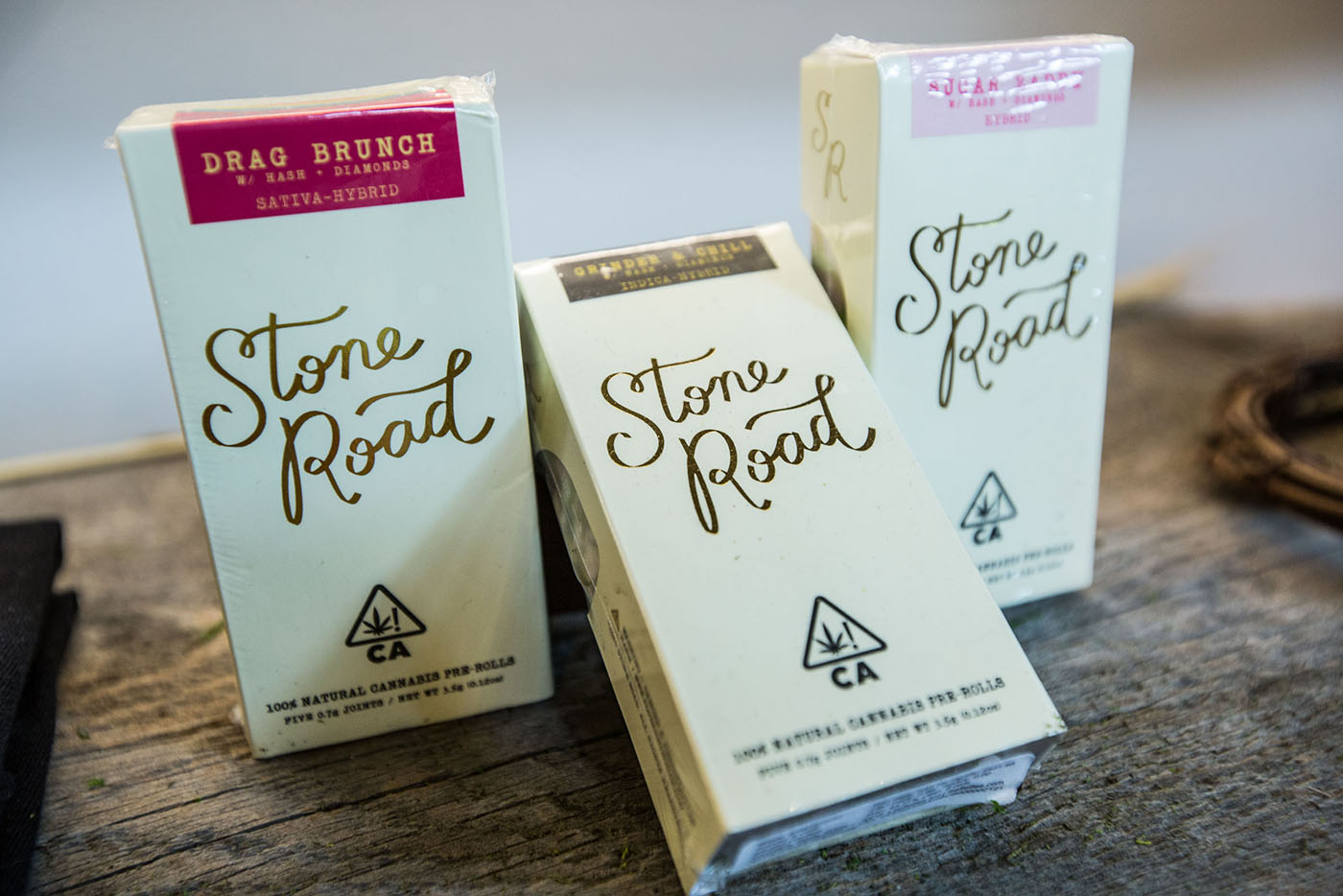
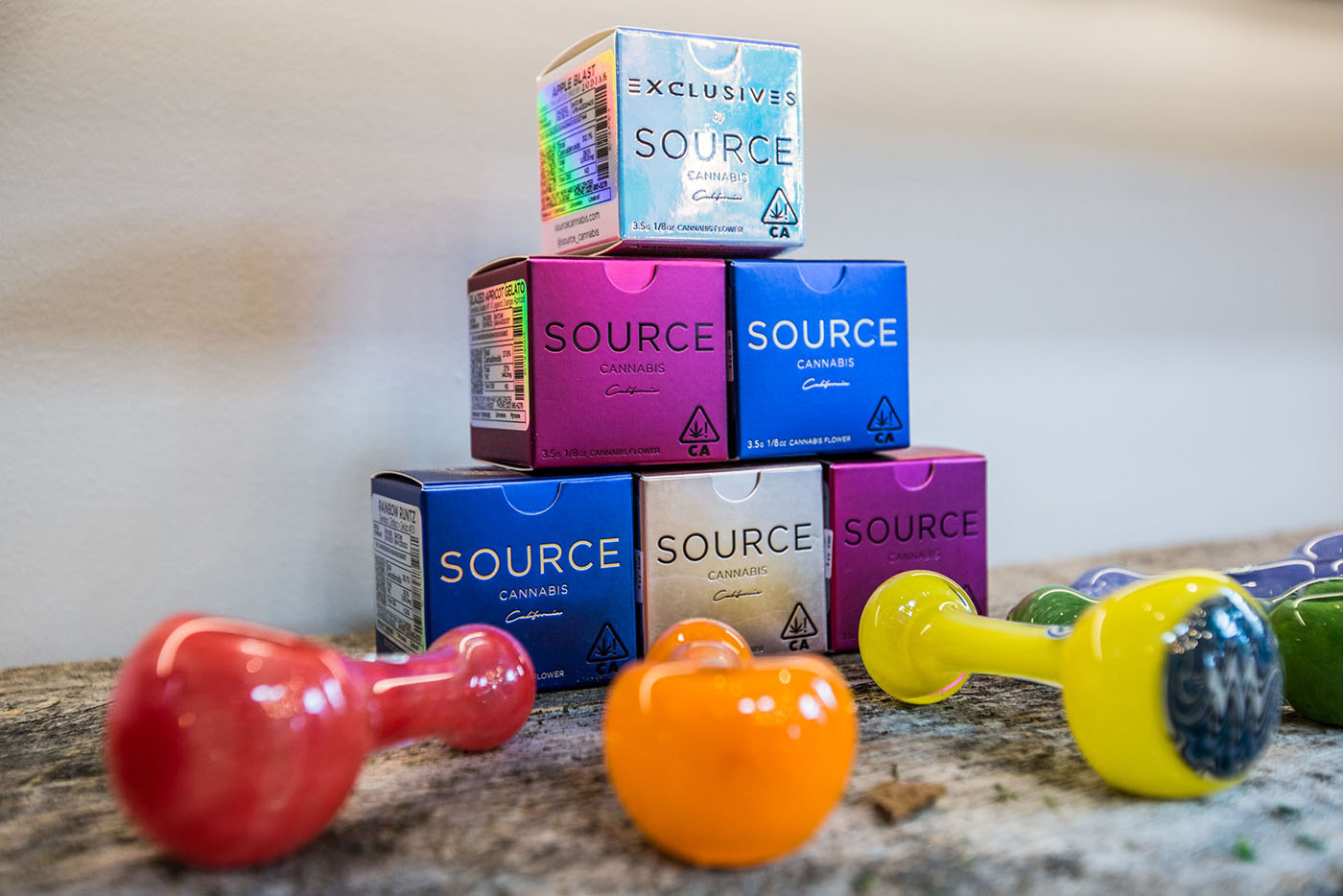
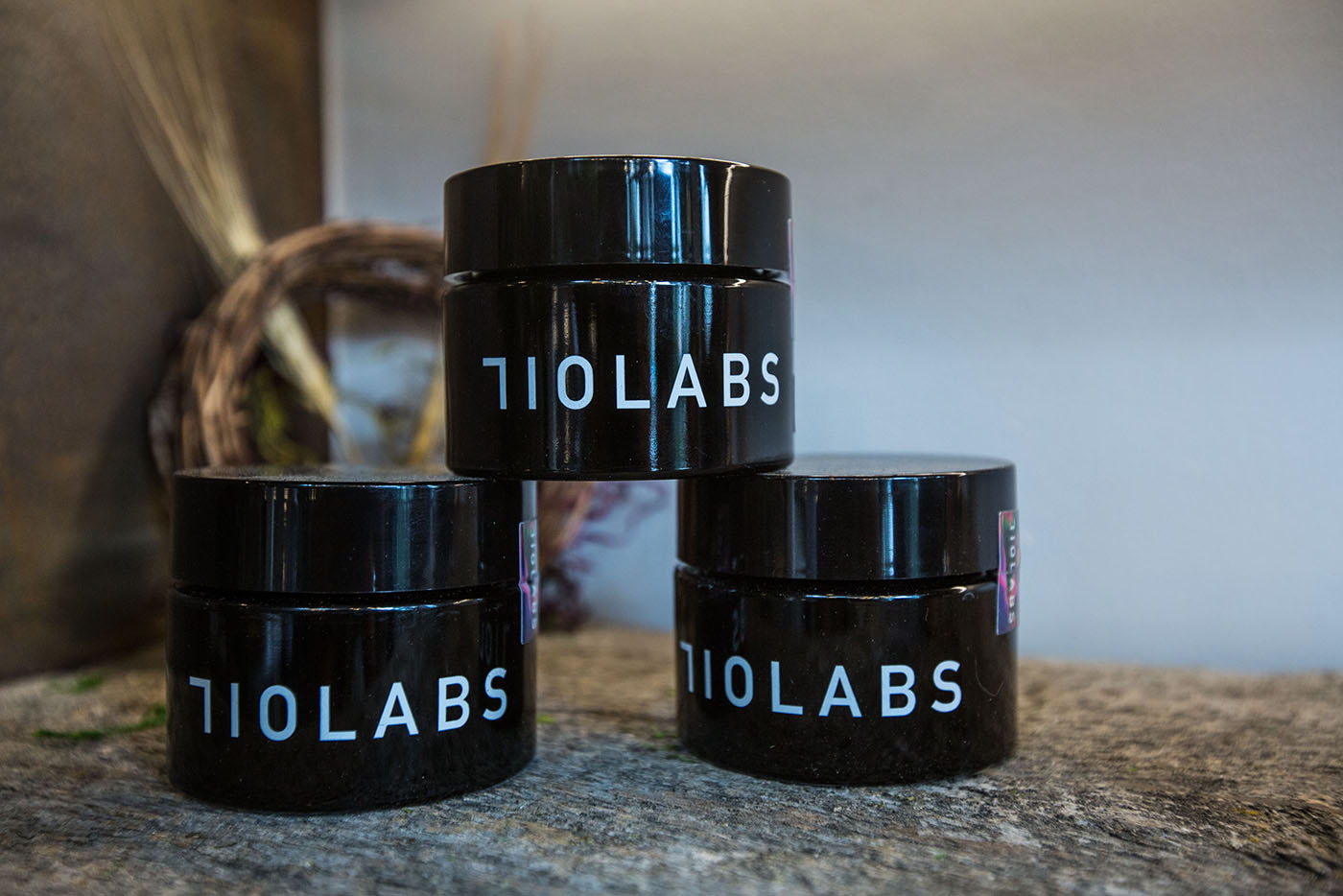
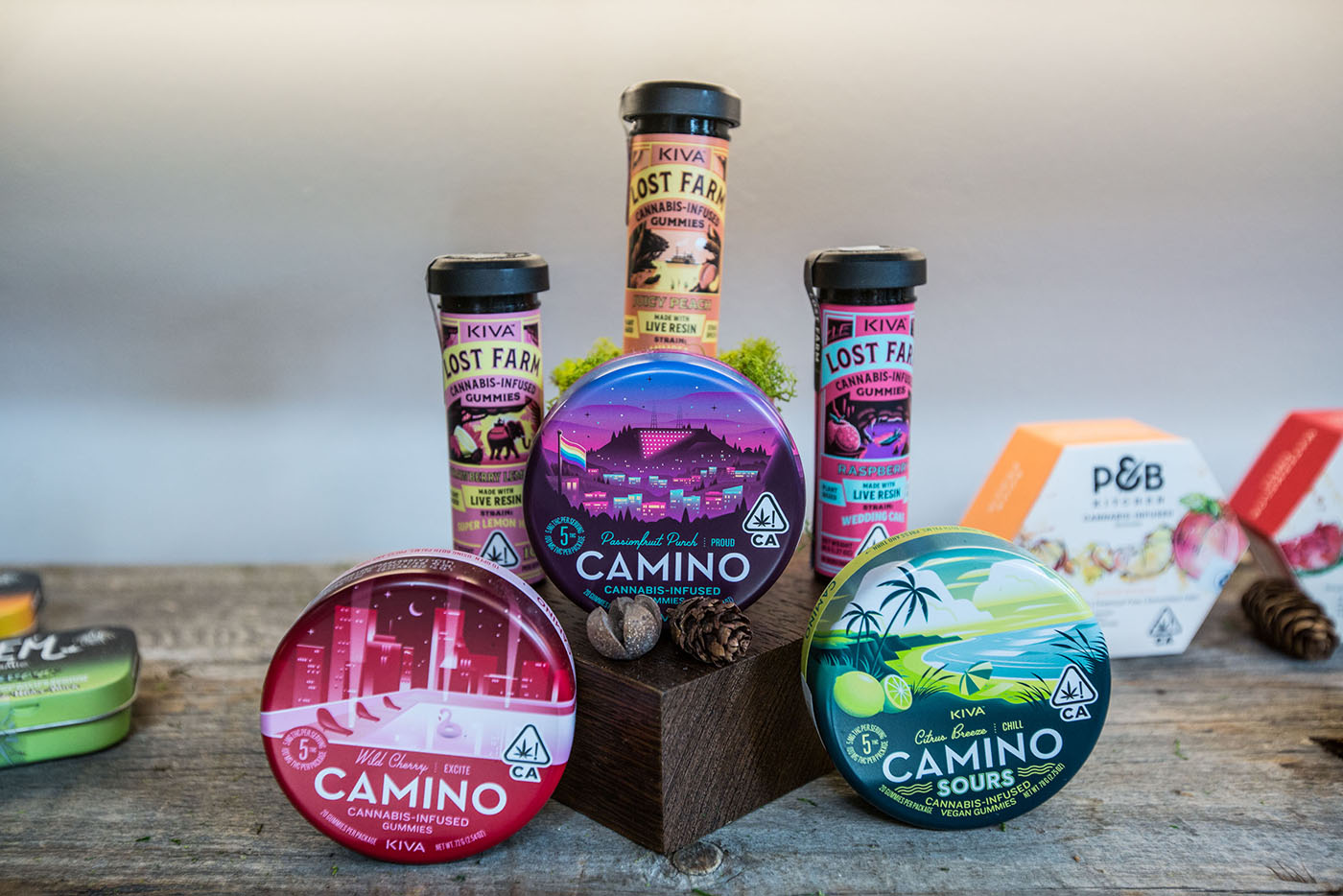
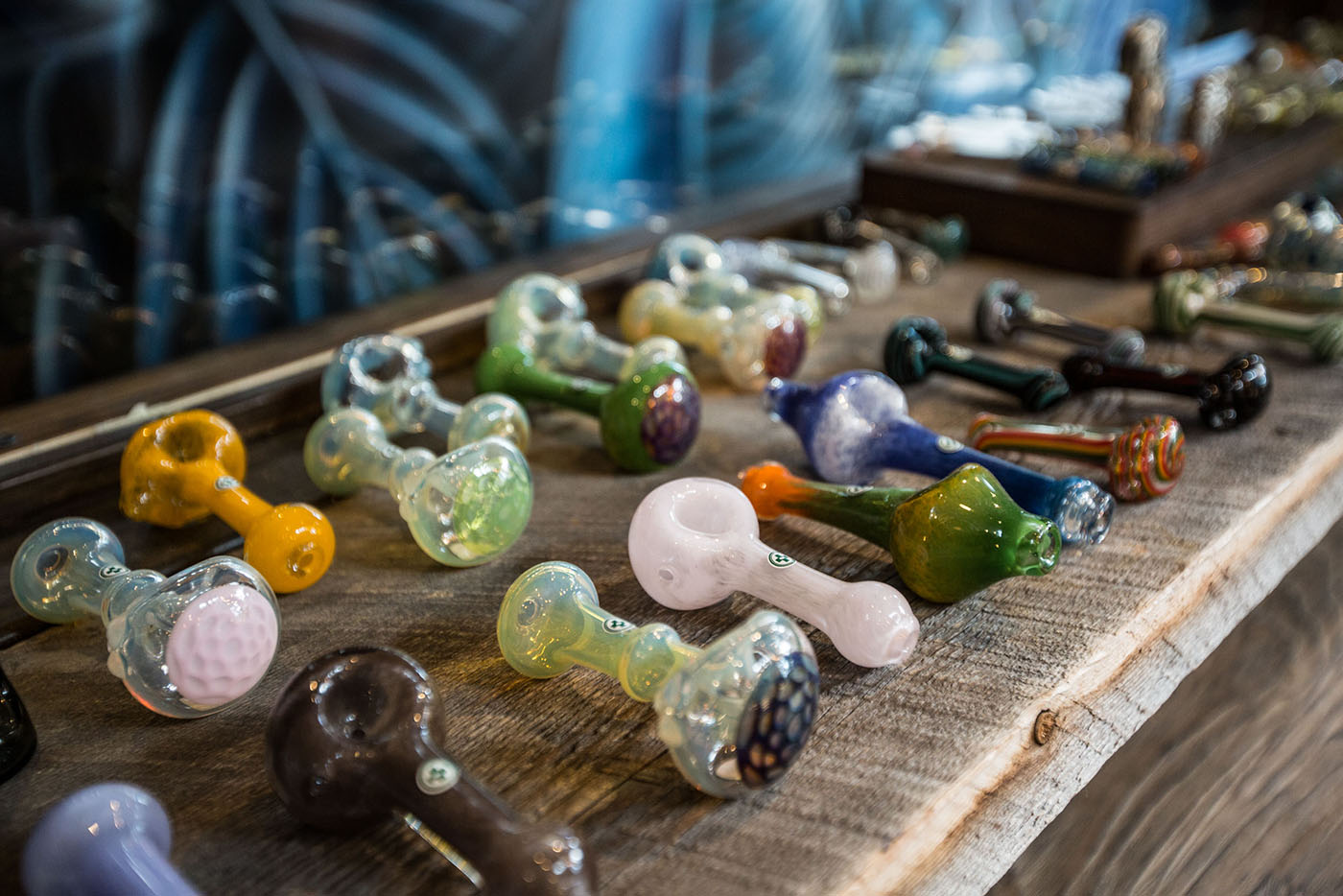
Like other dispensaries with a considered moral imperative, The Woods uses its prime shelf space to showcase brands that align with its philosophy of sustainable agricultural practices. The shelves stock healthy, terp-heavy flower from craft producers like Farm Cut, Humboldt Dry Farmed, and Ridgeline Farms. The sungrown section of the store also houses messaging from Sun+Earth, an organization filling the void left by organic certification, a designation that is not currently applicable to cannabis products.
“We want to appropriately honor the plant and foster its inevitable movement into the mainstream by educating and encouraging consumers to consume organic, heirloom, and sungrown cannabis products,” said Wheeler.
As one of the minds behind popular SoCal dispensary chain ERBA Markets, Wheeler is a longstanding proponent of elevating high-quality, sustainably grown flower. However, he also acknowledges the current trend for head-melting, ultra-high-potency indoor bud, and The Woods stocks in-demand brands like Alien Labs, Cannabiotix, and Jungle Boys.
“We’re just trying to present great options on the menu. People are always going to make their own decisions,” said Wheeler. “Obviously, we don’t expect to revolutionize the industry overnight, but we would like to be the people who flipped the first stone and used our platform to draw attention to important issues, which has been Woody’s modus operandi for thirty years now.”
While the blooming foliage inside the dispensary is striking, it’s nothing compared to the veritable jungle of rare plants and flowers out back. The Zen garden is Schoos’s fifteen-year pet project, and it contains varieties of frangipani, bundles of Spanish moss, mango and lychee trees, and rare species of yucca. Throughout the garden, large stone Buddhas and modernist cabanas are tucked into the thickets around a central pond stocked with a shoal of impressively large koi fish.
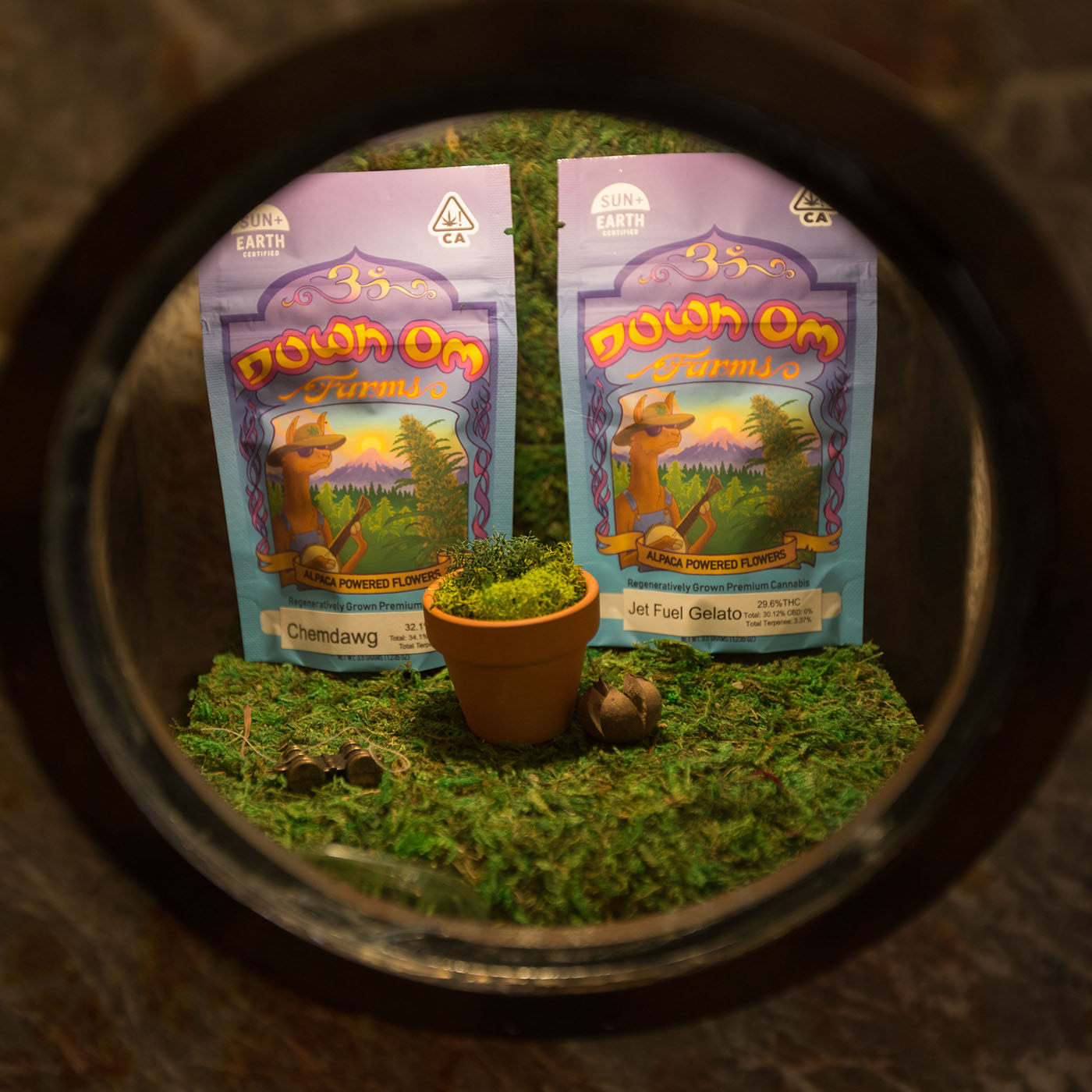
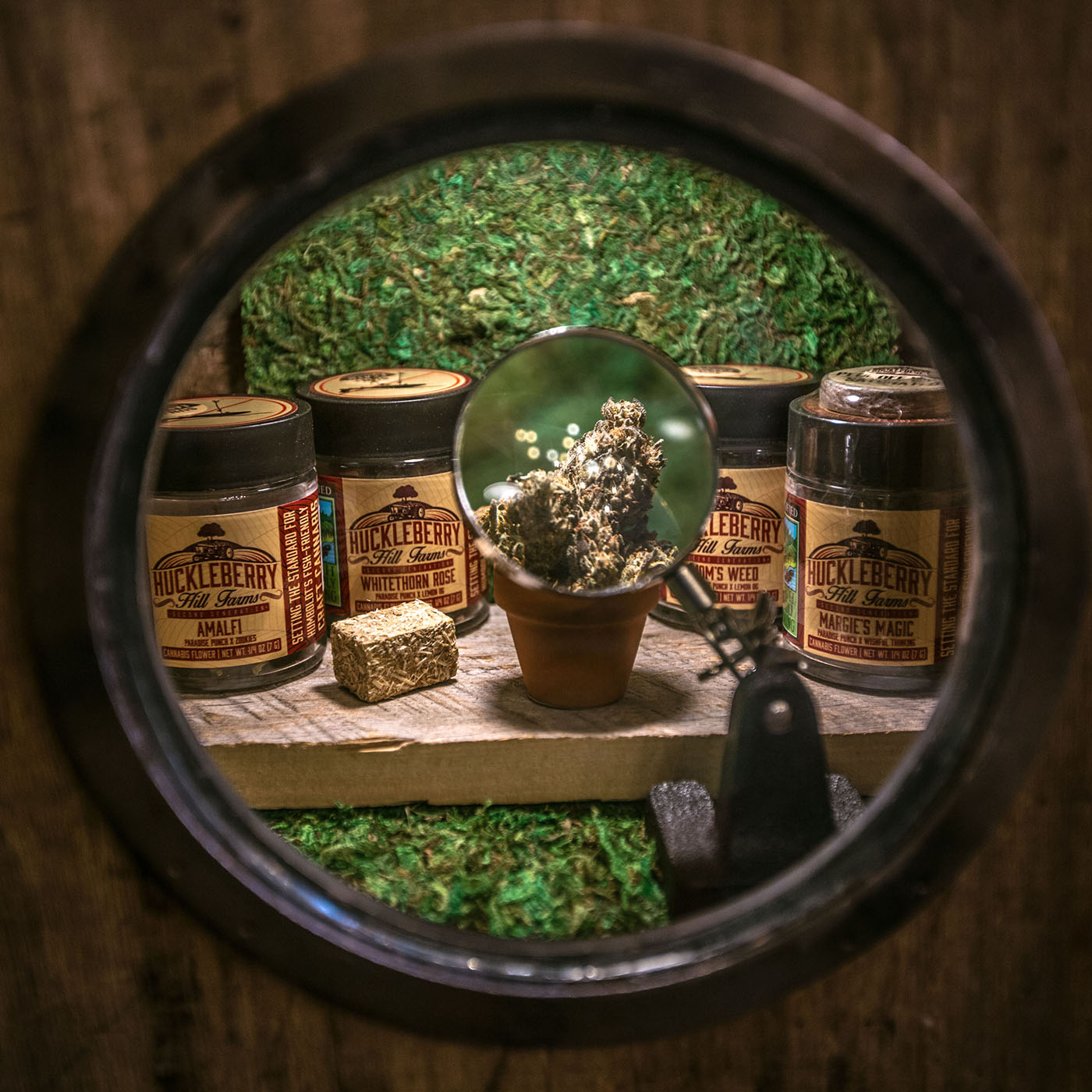
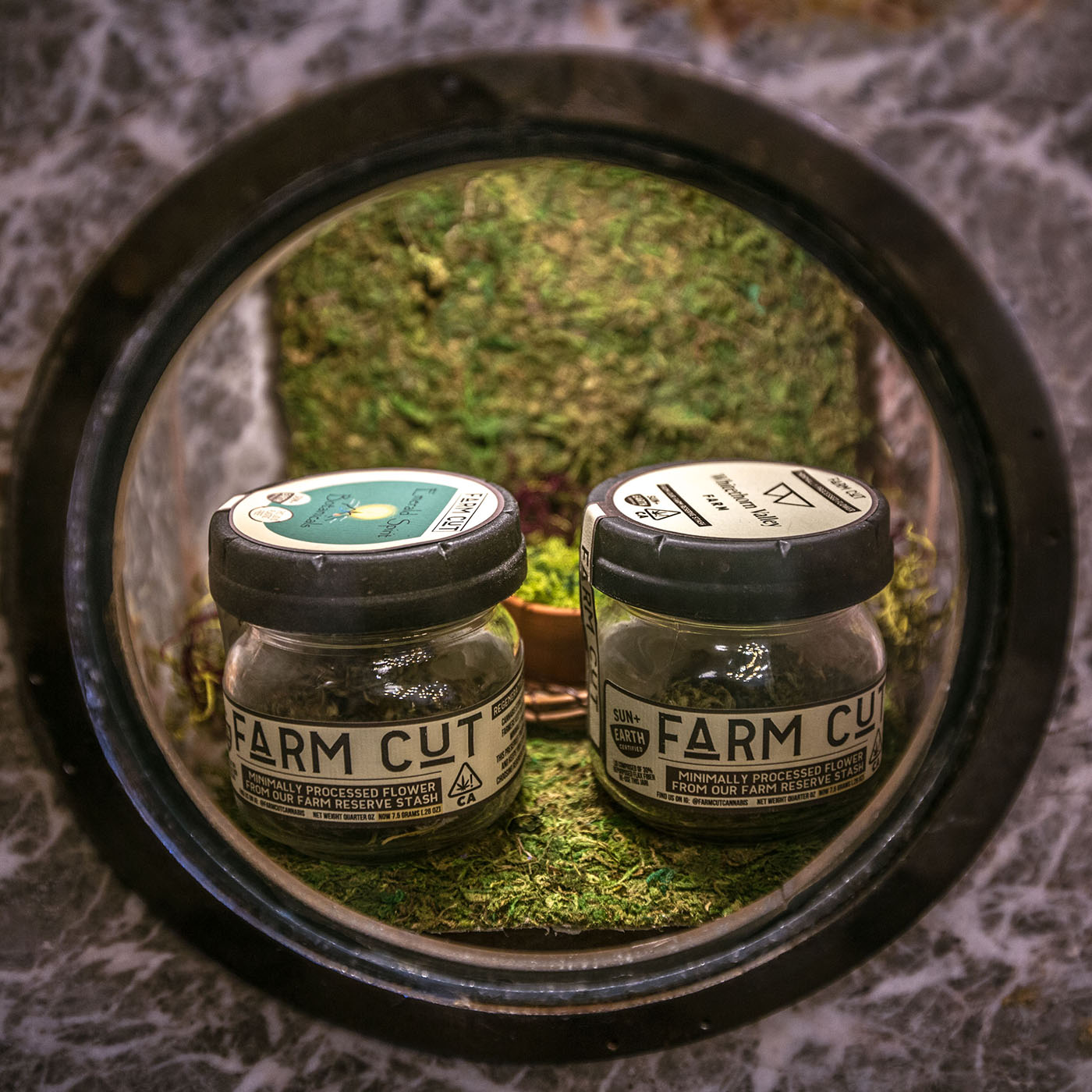
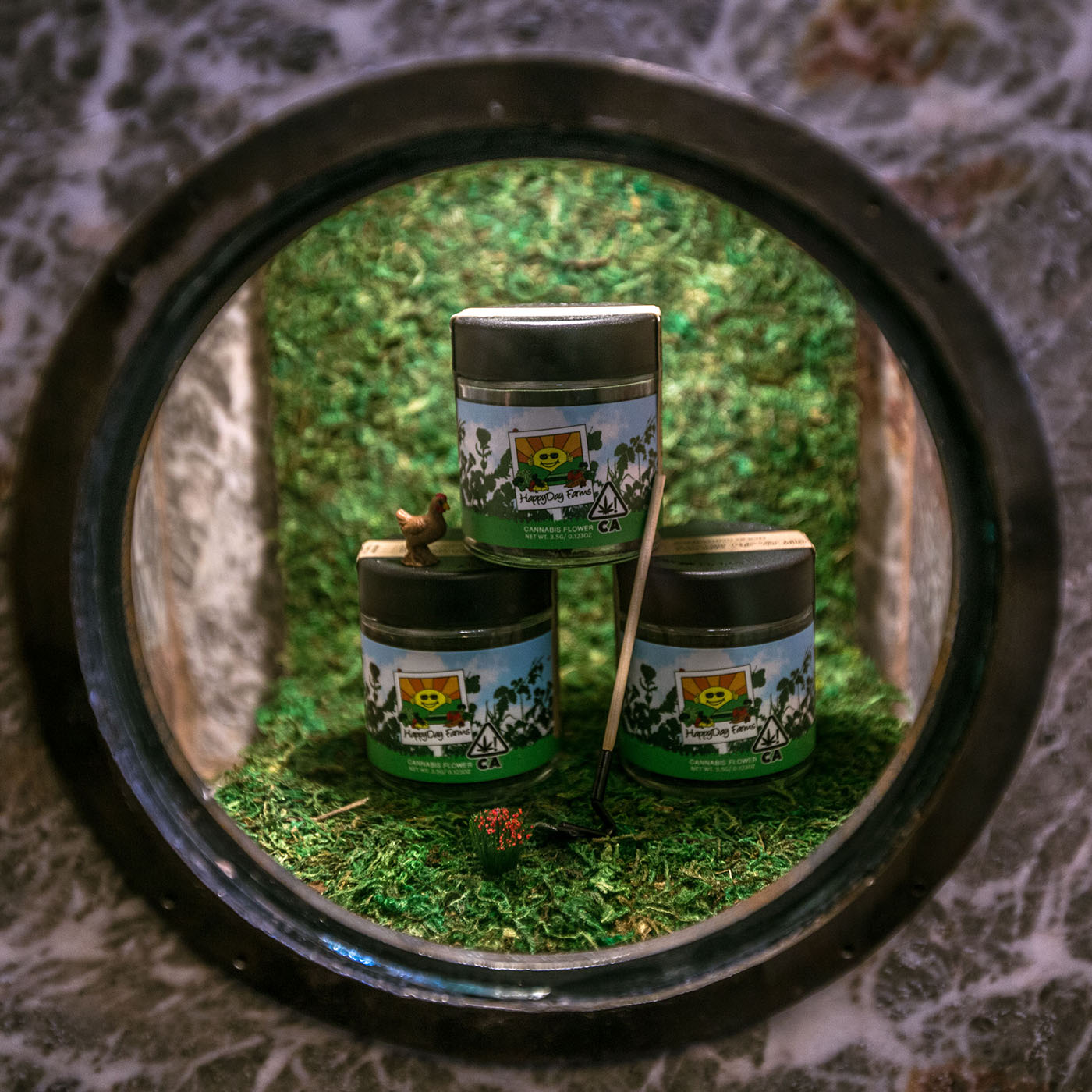
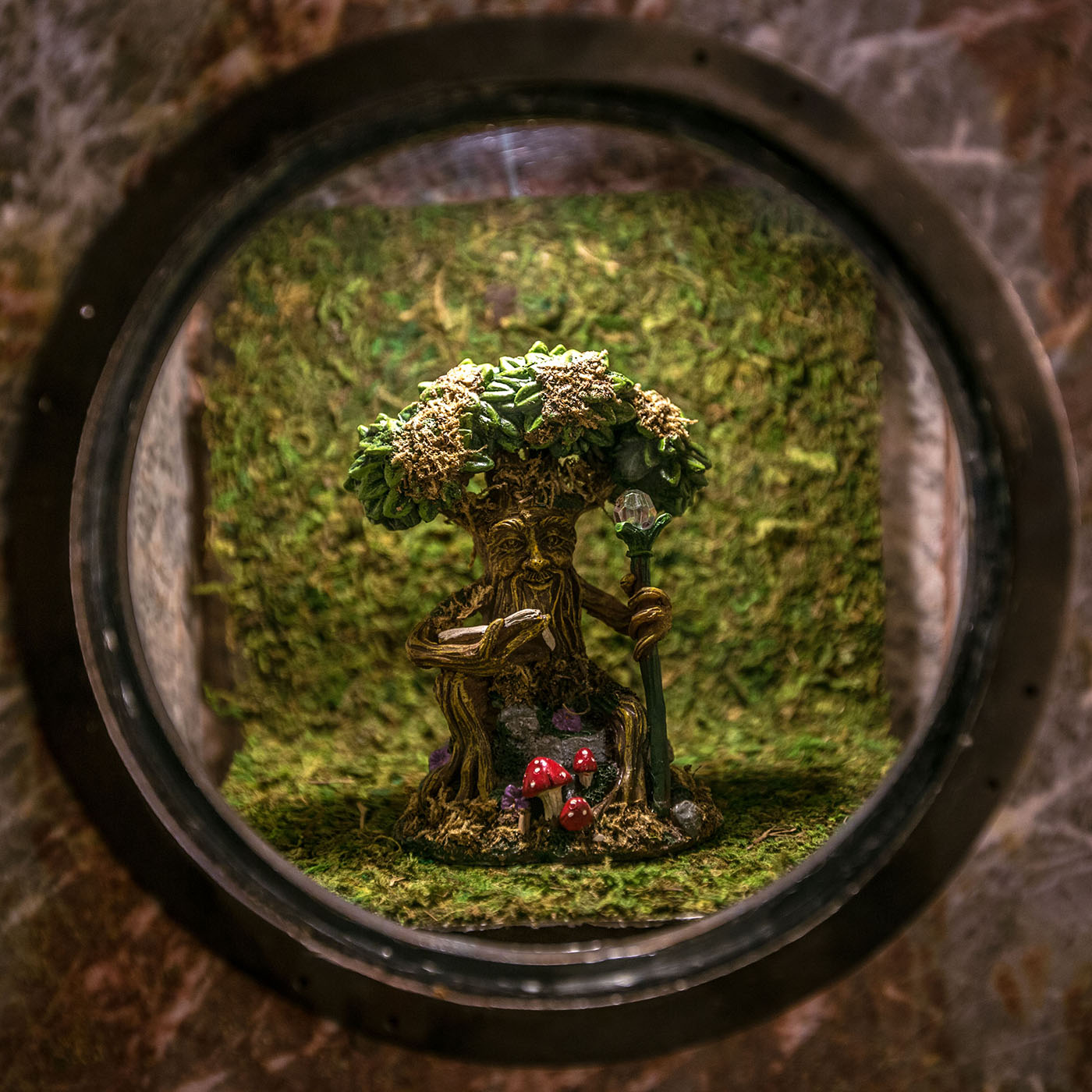
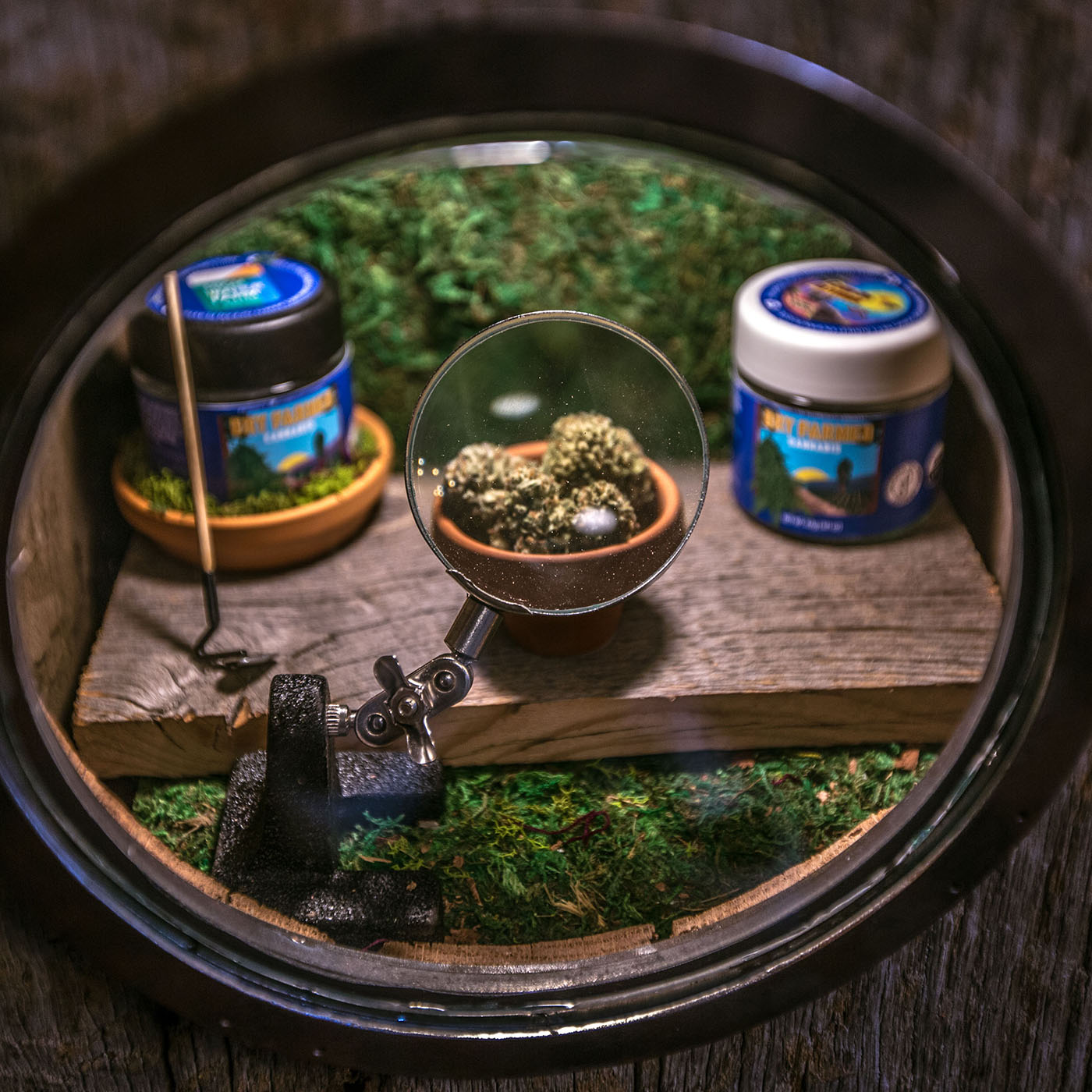
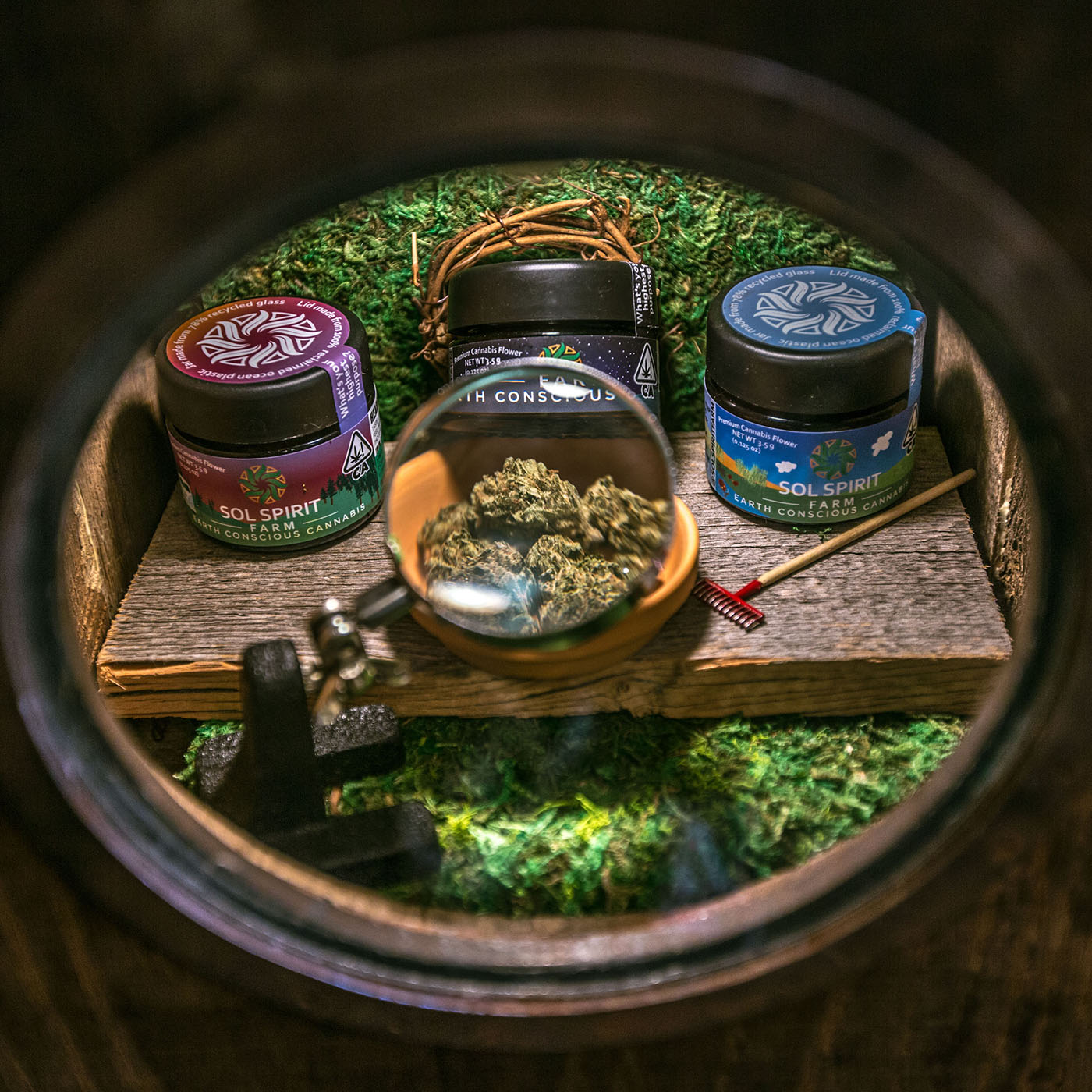
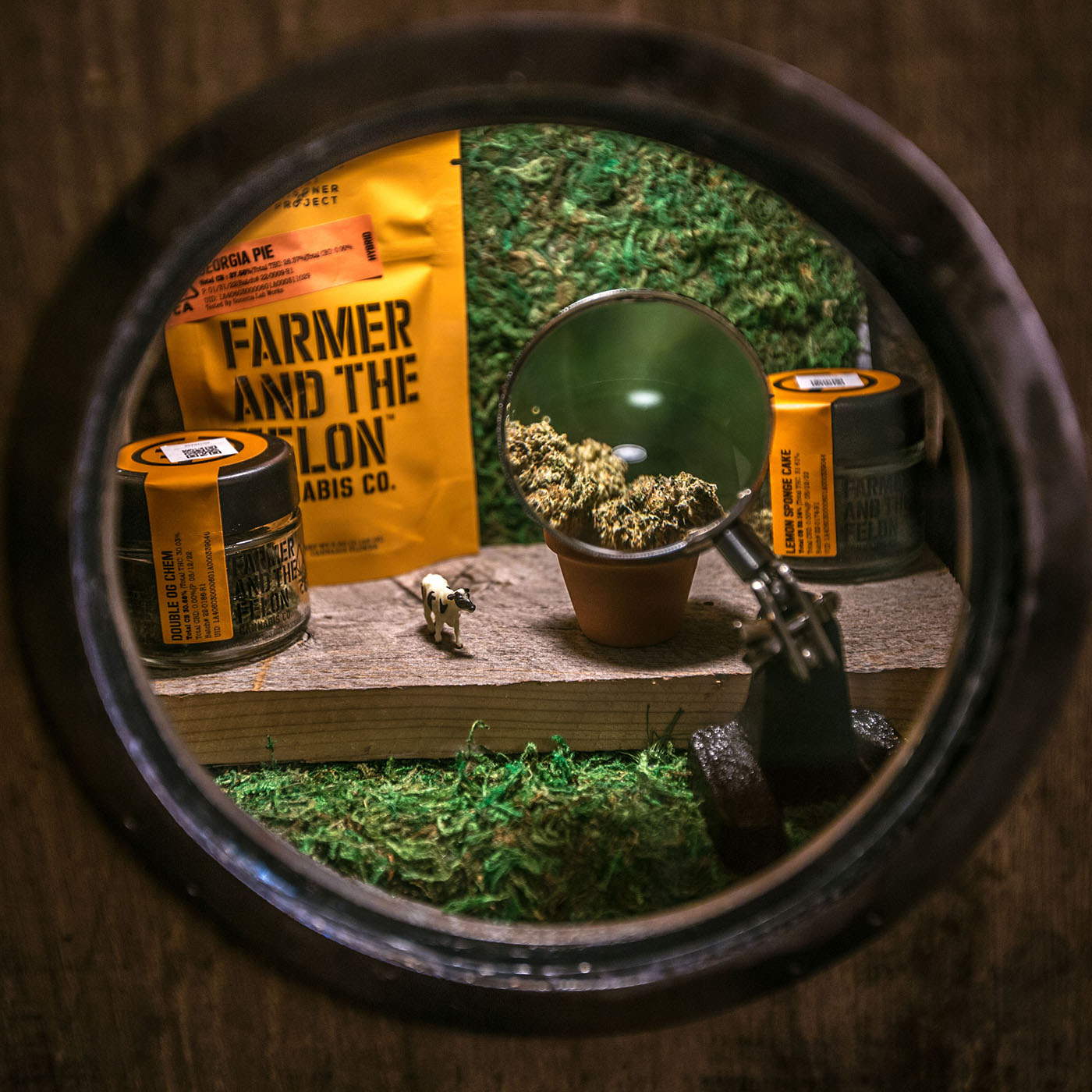
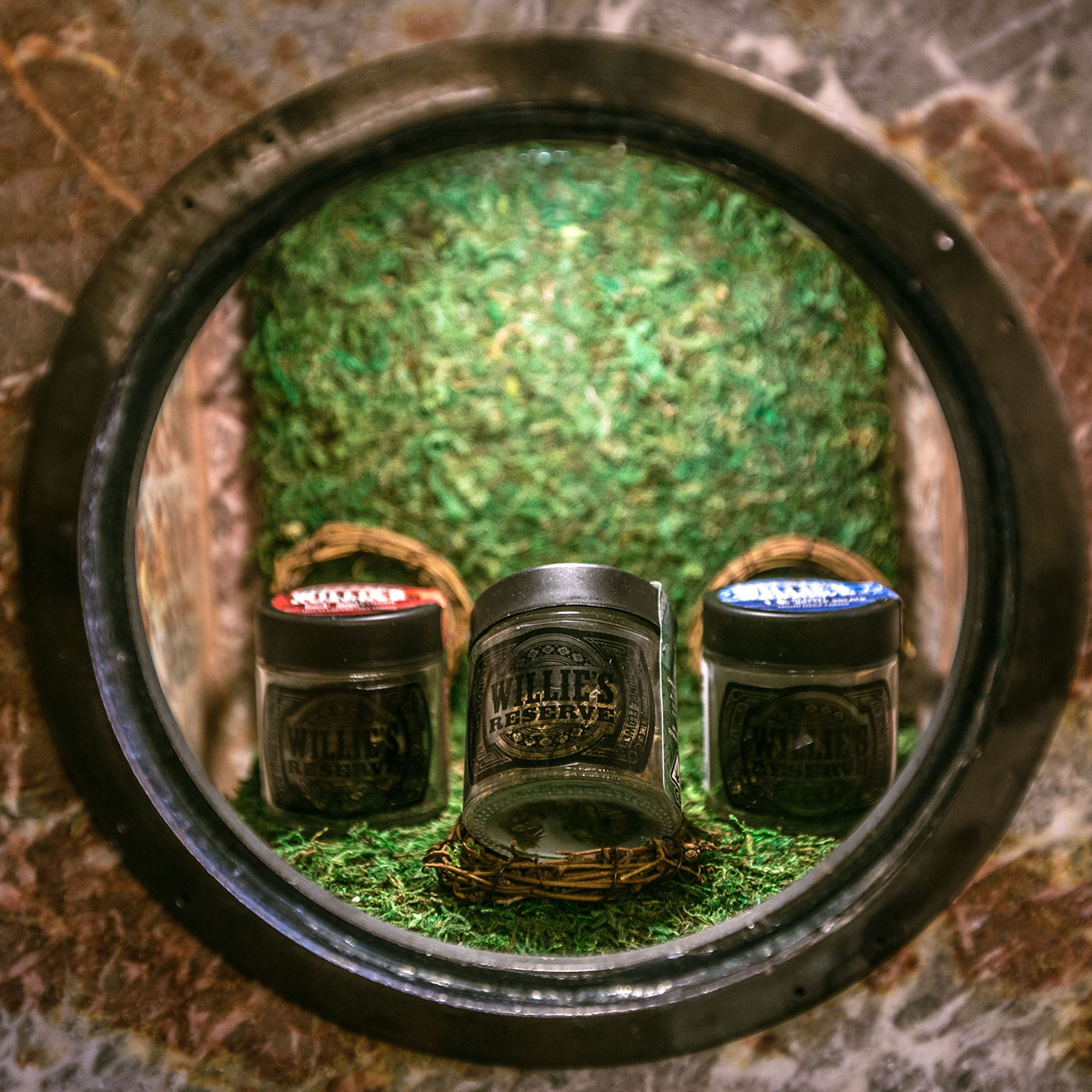
“That one’s called Torpedo,” said Schoos, pointing to an especially girthy orange-and-black-speckled koi peeking above the surface. “He’s thirty-two years old.”
As Schoos and Wheeler outline their plans for The Woods’ garden—which, when it opens, will be accessible to dispensary and bar customers, with a consumption area portioned off—Schoos’s four blue macaws squawk back and forth in conversation, pulling visitors deeper into the idyllic world far from the stressful streets of Los Angeles.
With West Hollywood keen to position itself as a cannabis tourist market, the irresistible combination of a celebrity-owned store with an immersive, social-media-friendly consumption space could prove to be a potent marketing asset.
And yet, The Woods is distinctly more than that. Harrelson is one of a relatively small number of celebrities with irrefutable bonafides in the industry, as demonstrated by his recent Emerald Cup Lifetime Achievement Award. The industry soon may find itself reckoning with the troubling environmental impact of its indoor agricultural practices. By encouraging a return to sungrown flower, The Woods may stand out as an early stone that created a ripple effect and Harrelson as a celebrity who used his platform to usher in change as opposed to just slapping his name on some co-packed flower and cashing the checks.
“I hope one day we can look back and see The Woods played a role in revolutionizing the industry by combining activism, quality, and a love for the plant’s healing properties while acknowledging the historic significance of its legalization and the activists who risked their lives to make it possible,” said Wheeler. “Cannabis is here to stay. It shouldn’t have to hide any longer. We want to bring it into the light, and when I look back on The Woods, I’ll rest easy knowing we played a part in making this a reality.”
Photography by Diana Dalsasso







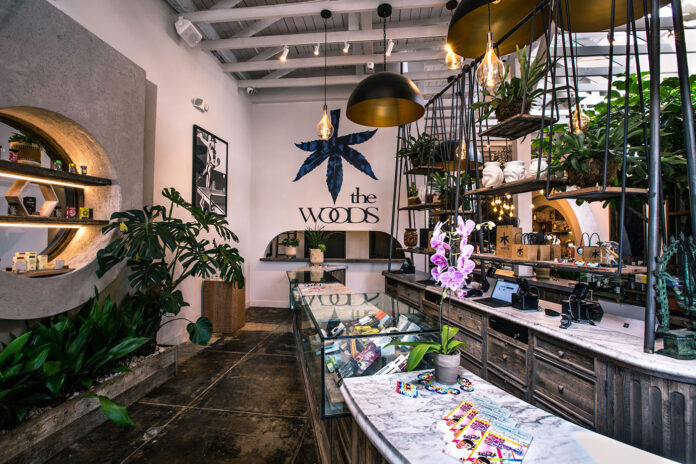





[…] floor to the exposed rafters and flying buttresses supporting the roof, the entire space oozes a Zen vibe that puts customers at ease right away. A large concierge desk near the front adds punctuation to […]